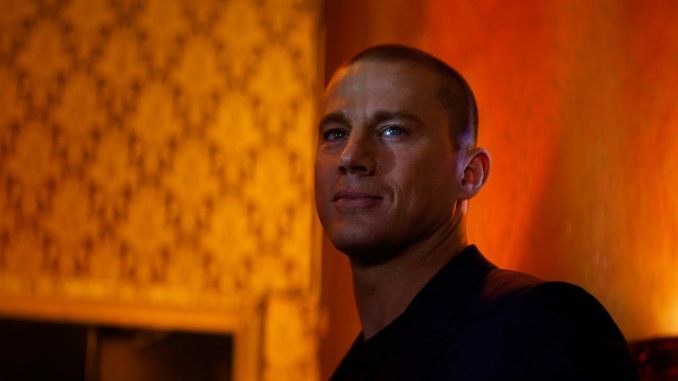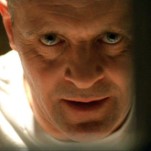Channing Tatum Has Always Been Following the Arc of the Great Movie Musical Stars

In Gene Kelly’s first feature film, For Me and My Gal, he plays Jo’s (Judy Garland) bumbling love interest, Harry. The two are drawn into a whirlwind romance, teetering on the precipice of World War I. It is a predictably structured romantic comedy bound by the pro-America propaganda machine which simmers beneath Hollywood war films. Even so, there is an endearing lightness that pervades For Me and My Gal—an intriguing grace that radiates from the protagonists. Director Busby Berkeley capitalizes on Kelly’s (as yet) unpracticed charm and in doing so would unveil the shape of his career to the movie-going public, sealing his future as a movie musical star.
Despite Kelly’s eminent watchability, For Me and My Gal is consigned to the lesser-known movie musicals. The same can also be said for Fred Astaire’s first onscreen jaunt with Ginger Rogers in Flying Down to Rio, a film that would re-establish an original mode of ballroom dancing. As Dick Richards describes in Ginger: Salute to a Star: “It was the emergence of a new technique created specially and superbly for the screen.” These films were mostly unmemorable, momentarily alleviated by the entrancing central performances. Now they are remembered for the brief sparks that cascade from the impenetrable, shiny surface of these studio pictures. Anne Fletcher’s Step Up operated similarly for Channing Tatum: A film largely devoid of cinematic character but determinedly welcoming him into the dwindling fold of movie musical stars.
Step Up is flattened by its paint-by-numbers approach to the inspiring coming-of-age drama, yet it soars when (literally) spotlighting the protagonists’ dancing. As someone who grew up in an era where the Step Up franchise was a staple of every sleepover, it has been fairly easy to disavow the bulk of these films—rote and emotionally removed—but I still find myself revisiting Tyler (Channing Tatum) and Nora’s (Jenna Dewan) final performance. There is an ease that possesses Tatum in these moments, but it belies a more cunning precision that guides his movement. This kind of methodology is distant for most contemporary Hollywood stars, who treat any musical number as a distraction from the character’s sense of personhood, divorcing the individual’s everyday physicality from these moments of musical elegance. Step Up would function as Tatum’s For Me and My Gal, showcasing a new talent whose bodily spontaneity stretched the limited shape of the film. Like Flying Down to Rio it would introduce a new series of movie musicals to the big screen, unique for the performers featured in these stories.
In 2012, Tatum committed to producing Magic Mike, loosely based around his own experience as a male stripper. The film is gaudy, initially glistening and slick, pointedly difficult to grasp. But eventually the Floridian dust settles, leaving the characters grimy, itching to escape the heat of the stage lights. But it is Magic Mike XXL, the sequel and buoyant counterpart to Soderbergh’s darker interpretation, that really exemplifies this story’s potential, letting every member of the ensemble flourish, basking in the adoring audience’s glow of appreciation. Magic Mike marked a new chapter of Tatum’s career, one in which he was able to craft the ideal vehicle for his elevated skillset, carrying his sense of movement and rhythm into the mainstream.
The succession of Magic Mike and Magic Mike XXL mimics Kelly’s run of films in the early ‘50s. Vincente Minnelli’s An American in Paris would be followed by the now revered Singin’ in the Rain; this two-year run was a pitch-perfect interlude that would showcase his musical prowess. In both cases the stars’ magnetism welded the film together behind the scenes and onscreen, offering them a way of letting their experience as dancers influence the rhythm and stride of the film. Kelly’s performance of “Singin’ in the Rain” is infused with a joy that overcomes him, channeling a luminosity reflected in the athleticism of his dancing. He twirls and spins and kicks in time to music, grabbing hold of the lamppost and clinging onto it, leveraging its sturdiness to throw his arms wide.
An early scene of Magic Mike XXL captures Mike tinkering in his workshop late at night, listening to the radio, when Ginuwine’s “Pony” comes on, possessing him. The distinct beat of the synthesizer guides him across the floor, over the table and eventually around a beam in a single leap.
-

-

-

-

-

-

-

-

-

-

-

-

-

-

-

-

-

-

-

-

-

-

-

-

-

-

-

-

-

-

-

-

-

-

-

-

-

-

-

-








































